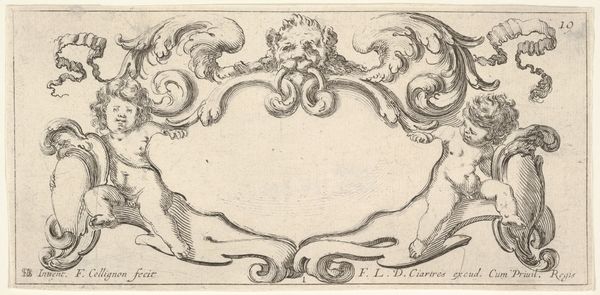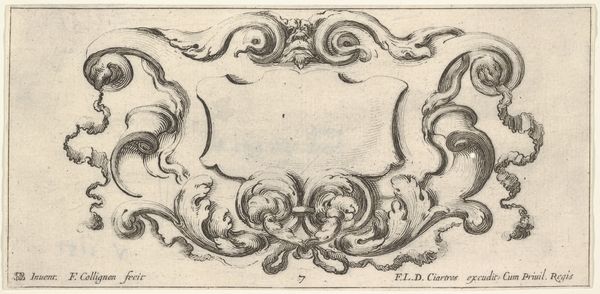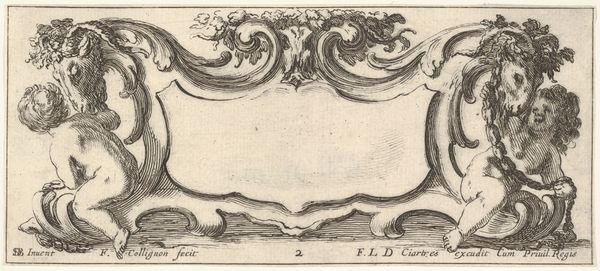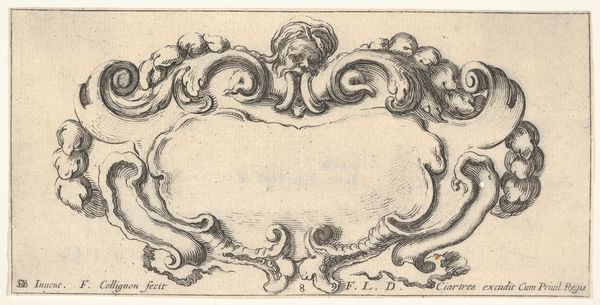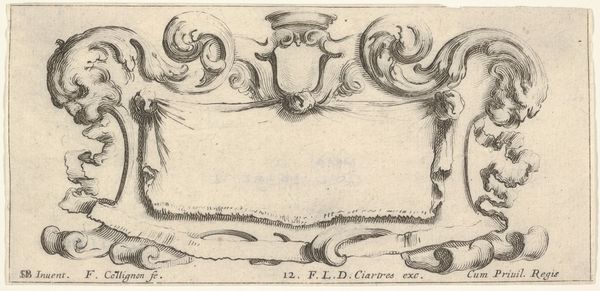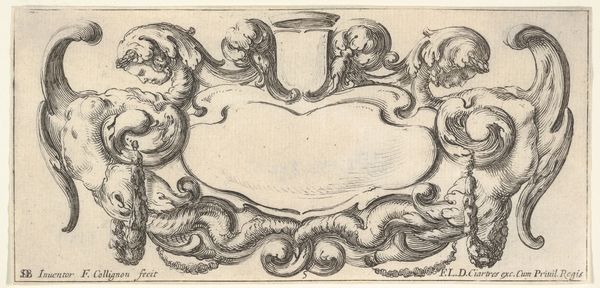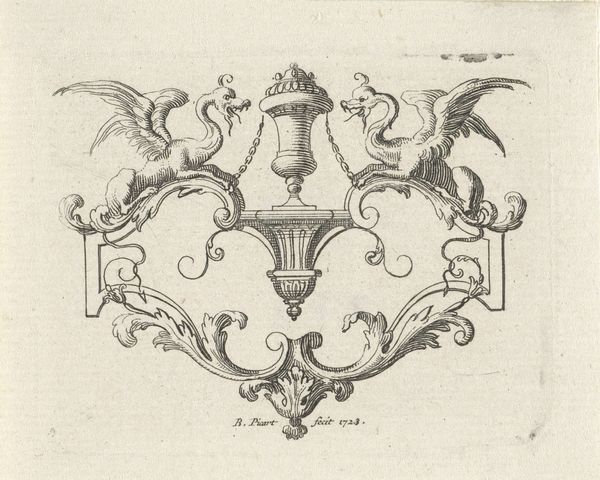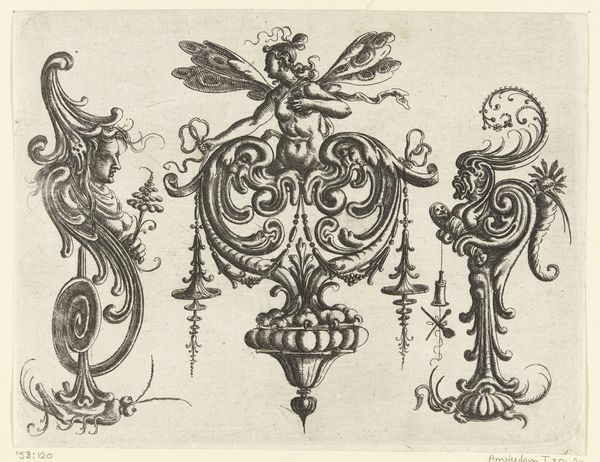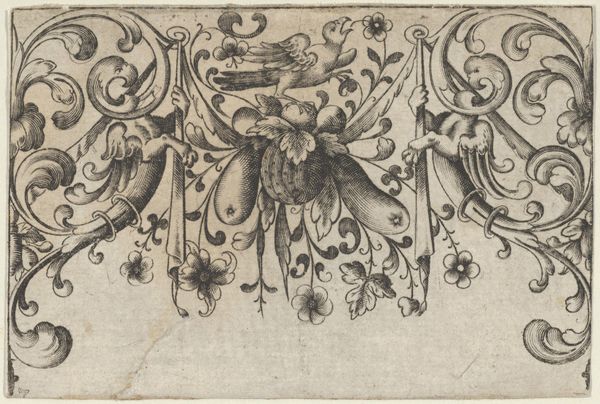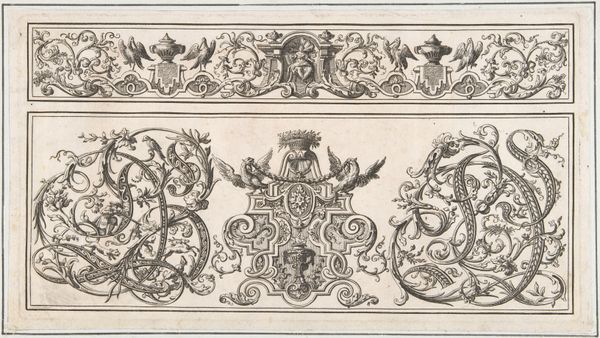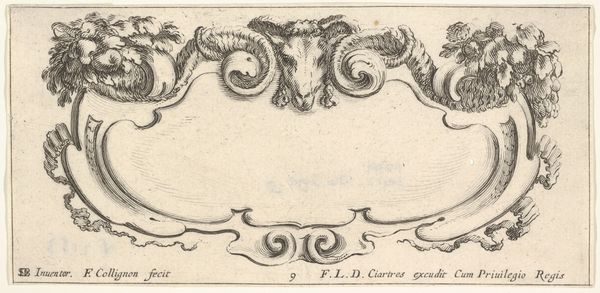
Plate 4: a cartouche with the head of a cherub at top center, leaves and flowers to either side, from 'Twelve cartouches' (Recueil de douze cartouches) 1640 - 1645
0:00
0:00
drawing, ornament, print, engraving
#
drawing
#
ornament
#
allegory
#
baroque
#
pen drawing
# print
#
flower
#
form
#
line
#
engraving
Dimensions: Sheet (Trimmed): 3 1/4 × 6 5/16 in. (8.3 × 16 cm)
Copyright: Public Domain
Curator: Immediately, there is a sense of refined tranquility evoked by the symmetry of the cherubic figure offset against swirling flora. The Baroque flair is just wonderful, isn’t it? Editor: Yes, the baroque is what I immediately noticed; however, the delicate, almost ethereal quality also gives me a sense of transience. The linear detail lends to it the effect that these may not be eternal symbols. Curator: I agree that the fineness of the engraving captures a feeling of ephemeral grace! This piece is called "Plate 4: a cartouche with the head of a cherub at top center, leaves and flowers to either side, from 'Twelve cartouches'." It comes to us from François Collignon, around 1640 to 1645. Editor: Cartouches were the ultimate symbol of identity and status in early modern Europe, weren’t they? To think that even ornamentation was deployed as part of social identity intrigues me to no end! I wonder what would have been emblazoned in the open space of this one? Curator: Quite! Traditionally, these decorative frames often encircled heraldic devices, which makes them fascinating capsules of identity in transition. This piece particularly uses the cherub motif, symbolizing innocence and divine blessing. Editor: While also hinting, possibly, at social structures based on class, origin and religion! A child angel’s presumed innocence does little to disguise the power and authority implied in its positioning as emblem. Does this divine innocence somehow validate early modern aristocracy? Curator: One could say that… Baroque art frequently navigates the sacred and secular, often blurring those lines! Even flowers themselves in that period could speak volumes; but in this case it's hard to determine what exactly they allude to. Editor: And let's not ignore the implicit whiteness – as well as maleness – of this icon, and, arguably, much European art. Its visual power may hinge on historical realities that favored the few! Curator: I do see your point; and maybe that kind of tension is exactly where some of the most impactful meaning springs from! That dialogue of history and power – still so present in art today. Editor: Precisely. These echoes, whether intentional or not, make studying historical works especially potent and reflective of issues of today. It reminds us of the ongoing relevance and presence of this kind of social symbolism.
Comments
No comments
Be the first to comment and join the conversation on the ultimate creative platform.
